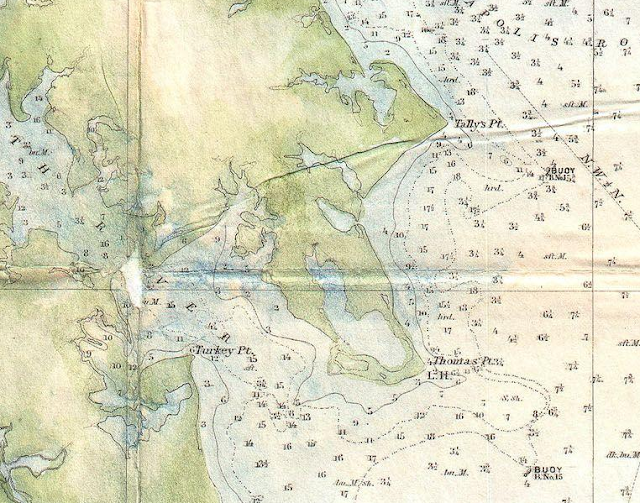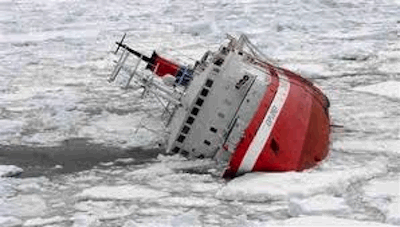The North-South running inlet off of the Chesapeake Bay, called Fishing Creek got its name as the wetlands bordering the creek were a prime nursery for every kind of fish that lives in the Bay. Oyster harbor is one of three communities, including Arundel on the Bay, and Fishing Creek Farms, that border Fishing Creek.
Lafayette’s troops camped in the area on their way to defeat the British at Yorktown in 1781. His troops used Fishing Creek as a place to fish.
In 1776, Fort Horn was built between Fishing Creek and the Severn River, to protect Annapolis harbor from invasion by the British fleets during the Revolutionary War and again during the War of 1812.
In the mid to late 1800s oysters were stored in a small harbor call Oyster Creek, where an Oyster processing plant once processed oysters that were delivered to Annapolis via what is now called Arundel on the Bay road.
Lighthouse Service built a shore based lighthouse in 1825, in what is now Thomas Point Park. It was rebuilt in 1840 due to erosion.
 |
| Combined NOAA Charts from 1825 to 9163 showing shoreline changes |
The seawall eroded away in only a few years due to currents, and the rising level of the Chesapeake Bay from destruction of wetlands as construction along the bay boomed.
The mouth of Fishing Creek originally went into the South River, but after some large storms between 1857 and 1899, it shifted to the entrance it has today.
 |
| Part of the 1857 Chesapeake Bay cart set showing Fishing Creek closed on the east side and Oyster Creek about the same as it is today. |
Tides and currents keep trying to fill in the mouth and keep water levels there at only about four feet deep. The Coast Guard maintains the channel into Fishing creek at a working depth of 6’ for its vessels. In October 2013, the channel was dredged to 9' by the Coast Guard for future larger USCG vessels to enter the creek. The new channel is very narrow, with little place to anchor beside it.
 |
| Scan of original NOAA charts from surveys dome in 1847, 1899 and 1910 of Oyster Harbor and Thomas Point (BLue was original shoreline in 1847, Black is shoreline in 1899 and red is land fill done for the Bay Ridge resort in early 1900s. |
In 1875 the screw-pile Thomas Point Lighthouse was built at a cost of $35,000. The lantern room, accessed by a ships ladder from the second level, is situated forty-three feet above mean high tide. A fourth-order Fresnel lens, manufactured by L. Sautter & Co., was previously mounted atop the cast-iron pedestal that now supports a modern beacon. The historic lens has been removed to the Commander’s Office of the Coast Guard in Baltimore.

Various methods have been used over the years to protect the station from winter ice flows on the Bay. Thomas Point Lighthouse was endangered in the winter of 1877, when heavy sheets of ice damaged the screwpile foundation. The crushing impact of the ice overturned the lens, damaging it badly enough that it had to be replaced. As a result, an ice-breaker consisting of “three wrought-iron screwpiles, connected together by double channel-iron beams, surmounted by heavy cast-iron caps, securely bolted together” was positioned ninety feet north of the light station. Over the years, tons of riprap have been placed about the piles to provide further protection from ice and scouring.
 |
| Thomas Point Light 1928 |
By 1964, Thomas Point Shoal Lighthouse was the only manned station on the Chesapeake Bay. Four Coastguardsmen divvied up lighthouse duties, with each taking a week of shore leave every four weeks. A lightship tender made a monthly delivery of fresh water, fuel and supplies. This state of affairs lasted until the 1970’s, when a three-man crew, with a two-weeks-on, one-week-off rotation took over. The crewman arriving at the station would bring groceries and mail for the week, and the one leaving would tote away the trash. Scott Kaufman, stationed at the lighthouse in the early 1980’s, commented that living at the station gave him plenty of time to think. “All the problems you have. You can just sit out here and think out all the angles. I’ll even sit here and think about my friend’s problems. That’s how much time I have.”
 |
| Coast Guardsmen 1968 at Thomas Point Light |
In 1972 the station felt the effects of tropical storm Agnes, which raised 23-foot waves and brought them crashing down upon the cottage and foundation. The lighthouse managed to survive the assault with only minimal damage, but for a while there was some question if it would survive the Coast Guard’s announcement that same year that the lighthouse would be “evaluated for cost effectiveness.” In the past, other screwpile lighthouses had simply been set afire, and then replaced by a low-maintenance structure mounted on the old pile foundation. Public outcry, bolstered by politicians looking for a cause in an election year, managed to change the Coast Guard’s plans, and on January 23, 1975, Thomas Point Lighthouse was granted historic landmark status. The Coast Guard staffed the lighthouse until it was fully automated in 1986.
 |
| Interior of Thomas Point Light |
Under the National Historic Lighthouse Preservation Act of 2000, a consortium of four partners (the Annapolis Maritime Museum, the Chesapeake Chapter of the U.S. Lighthouse Society, the City of Annapolis and Anne Arundel County) took control of the Thomas Point Shoal Lighthouse in 2004. The City of Annapolis serves as the owner of the station, leasing it to the Chesapeake Chapter of the U.S. Lighthouse Society, which acts as the managerial organization. The Annapolis Maritime Museum houses exhibits on the lighthouse and serves as a shore-departure point for tours to the lighthouse, while Anne Arundel County offers expert advice on how best to preserve the light and the surrounding environment. Lighthouse enthusiasts are now fortunate to have the opportunity to tour the only unaltered screwpile lighthouse in the United States remaining attached to its original foundation. Today it is one of the most recognizable symbols of Maryland and the Chesapeake Bay.
References and more reading:
http://www.lighthousefriends.com/light.asp?ID=425,
http://en.wikipedia.org/wiki/Thomas_Point_Shoal_Light
Getting back to the shoreline of Oyster Harbor, the waters around the middle Chesapeake Bay were filled with oysters. The were natural Oyster Bars that had mounds of oysters, living ones attached to the shells of thousands of generations of dead oysters. The bars were charted specifically for oyster men to harvest.
 |
1906 Chart of the Oyster Bars off of Oyster Harbor. Each bar had a name.
|
 |
| The remains of the land based Thomas Point light and the Fishing Creek opening into the Bay are clearly indicated on this chart from 1906. |
If you drag the bottom of the Bay outside of Oyster Harbor today, you will find very few oysters remaining from these huge Oyster Bars indicated in 1906.
I have yet to find the exact year(s) the end of Fishing Creek opened up. Eventually we will add this Blog data to the Oyster Harbor community web site.
If you have historic photos or information, please feel free to submit them the community at:
https://podio.com/webforms/5980990/466054










